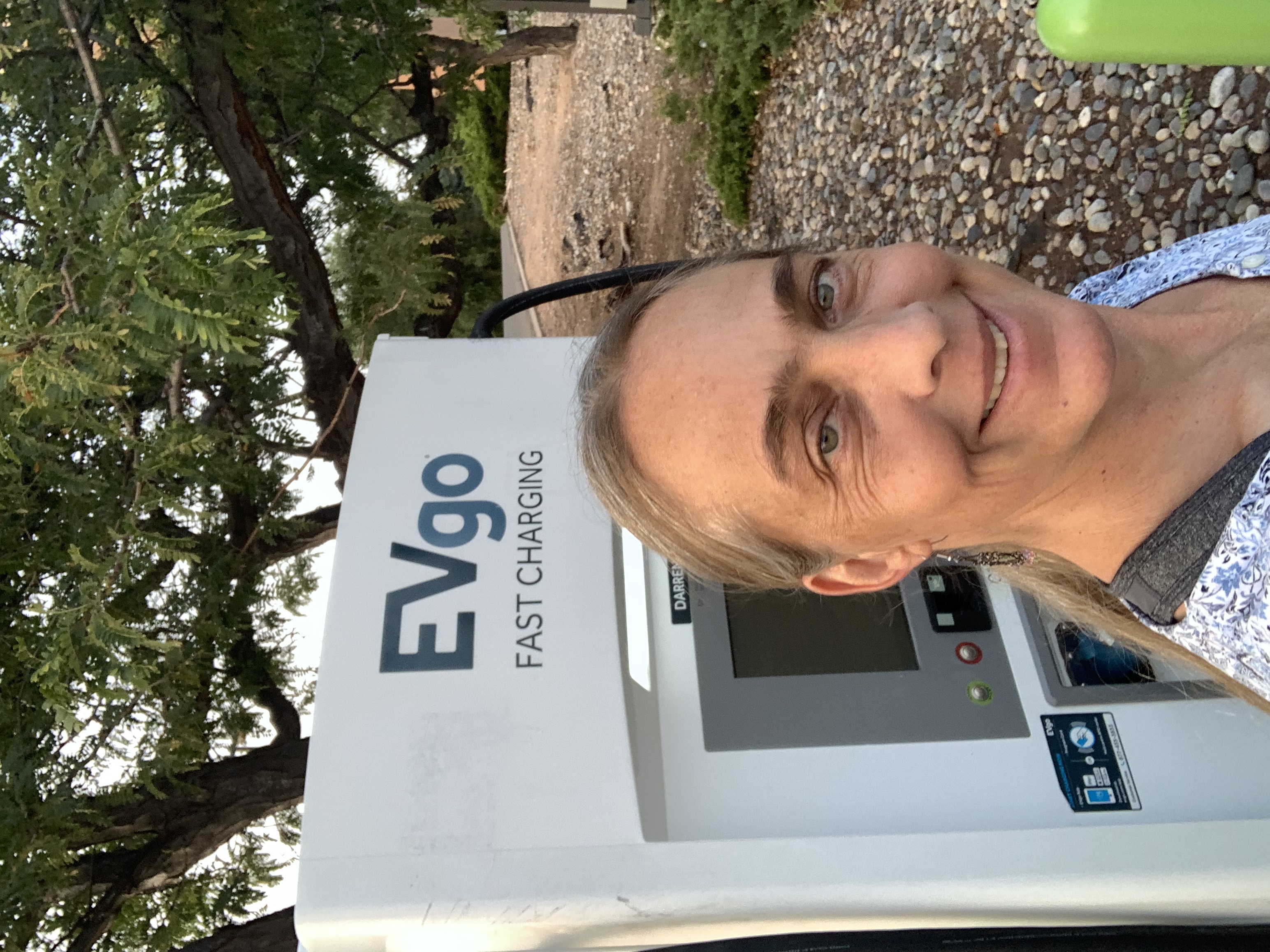NEWS
Mara Yarbrough's 2020 NM SMART Grid Center Externship Experience with EMNRD
Alternative Fuels in the United States: Research and Application in New Mexico

Our second NM SMART Grid Center 2020 extern, Mara Yarbrough, just completed her 10-week externship with the New Mexico Energy, Minerals and Natural Resources Department (EMNRD) researching practical policies state governments can implement to reduce greenhouse gas emissions. She shared her thoughts with us on the experience in this brief reflection. Enjoy!
Imagine cruising through New Mexico, driving to work or school, or on a road trip to Carlsbad Caverns or the mountains, enjoying our beautiful clear blue skies and clean air with the peace of mind that comes from knowing that your vehicle is not contributing to harmful air pollution and climate change because it runs on electricity generated from a renewable resource like solar or wind. When the electric vehicle you’re driving runs low on energy, you simply pull up to a convenient charging station, plug it in, and recharge it. New Mexico already has policies and programs in place to accelerate this reality, but there is always room for improvement, and the State can emulate other states’ efforts and create even more robust and effective alternative fuel policies.
With the unprecedented effects of climate change bearing down on the planet in the form of ever-more-devastating events like rampant wildfires, powerful hurricanes, and chronic drought, it is critical that state governments act quickly and assertively to do their part to mitigate climate change by implementing practical policies to reduce greenhouse gas emissions (GHGs). In the United States, the transportation sector is the largest emitter of GHGs, and every state can play an important role in reducing the amount of GHGs released into the atmosphere by replacing fossil fuels with alternative fuels. The research I conducted this summer through the New Mexico EPSCoR Externship program opened my eyes to the wide range of practical and innovative policies that states across the nation have implemented to reduce GHGs both within and beyond their own geographic boundaries. These policies range from rebates and tax incentives that make it more feasible for individuals, businesses, and governments to purchase and lease alternative-fuel vehicles, to financial support for tourist-destination communities to install electric-vehicle charging stations, to channeling penalties collected from violations of air quality laws to school districts for alternative-fuel support and air-quality education.
In New Mexico, we are moving toward achieving 50% carbon-free energy generation and use by 2030 and 100% by 2045 under the Energy Transition Act, and a major factor in reaching those goals will be the effectiveness of our alternative-fuel policies and practices, including how such policies address the relationship between the transition of our electric grid to clean energy and the promotion of electricity as fuel. After my research, I am more aware of the large size of my own carbon footprint, since I drive a truck, commute many miles every day, and do not own an electric or hybrid electric vehicle; I’ve never considered owning an electric or hybrid vehicle because of the seemingly prohibitive cost and the lack of electric vehicle charging infrastructure in my rural section of the state. New Mexico can – and is working to – implement robust programs that would help me (and all New Mexicans) consider a carbon-free vehicle when it comes time to replace my truck. I look forward to, one day, being able to take a road trip to City of Rocks or White Sands and being at peace knowing that I am not contributing to air pollution and climate change with my vehicle and that New Mexico’s actions to reduce GHGs will have made that possible.
Mara Yarbrough, J.D

